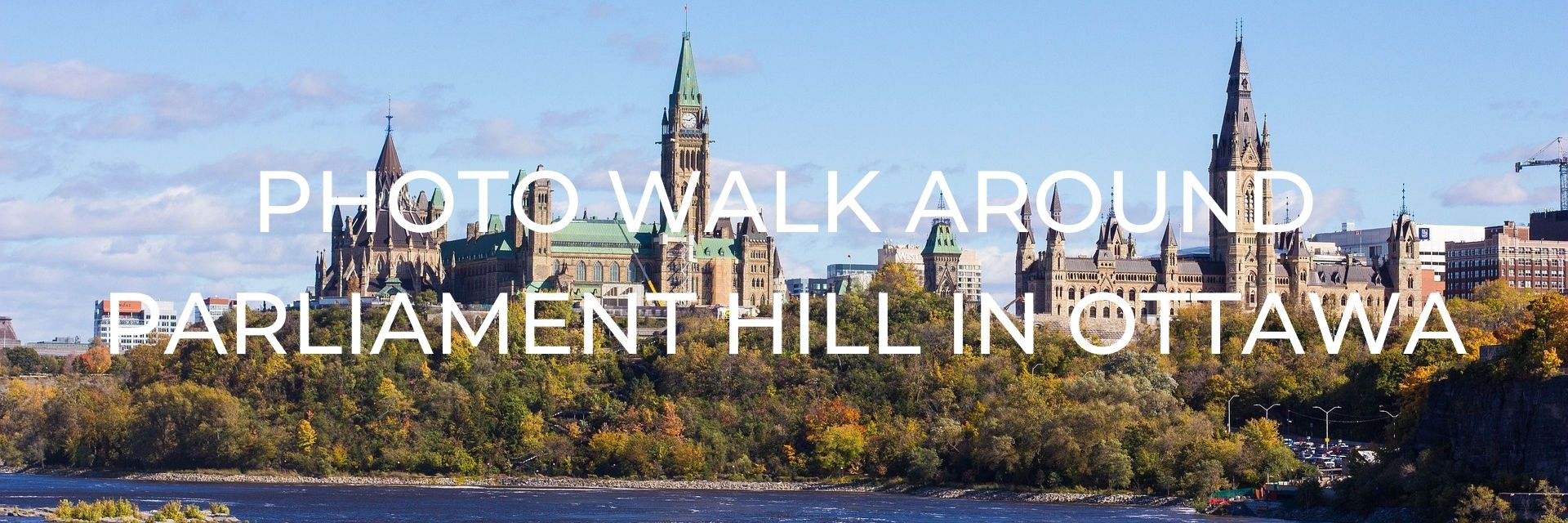
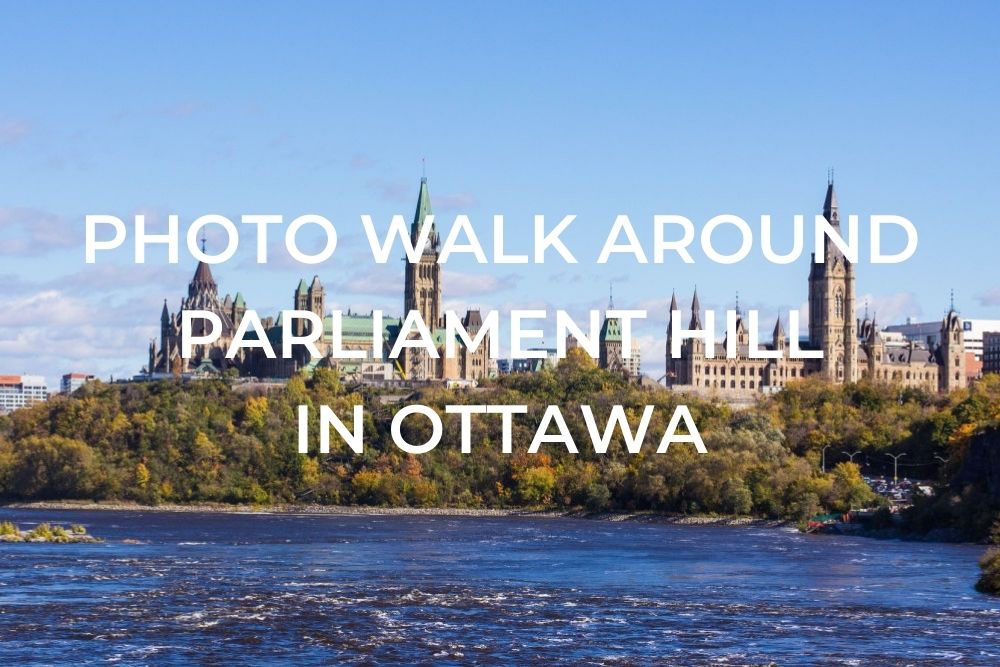
Having never visited the capital city of my home country while I lived in Canada, I was really looking forward to our time in Ottawa during our trip over the New Year. Of course, I’ve seen many, many photos of Parliament Hill during my life but to finally get to visit it…awesome. So much history and architecture. Oh, the architecture. I’d say touring the Centre Block of Parliament Hill was my favourite part of our visit to Ottawa, but a very close second was the time we spend just strolling around the buildings and then down to Rideau Canal and back up into Confederation Square.
Today I’d like to take you along with us on a little (photo) stroll of those areas of Ottawa…
CENTRE BLOCK
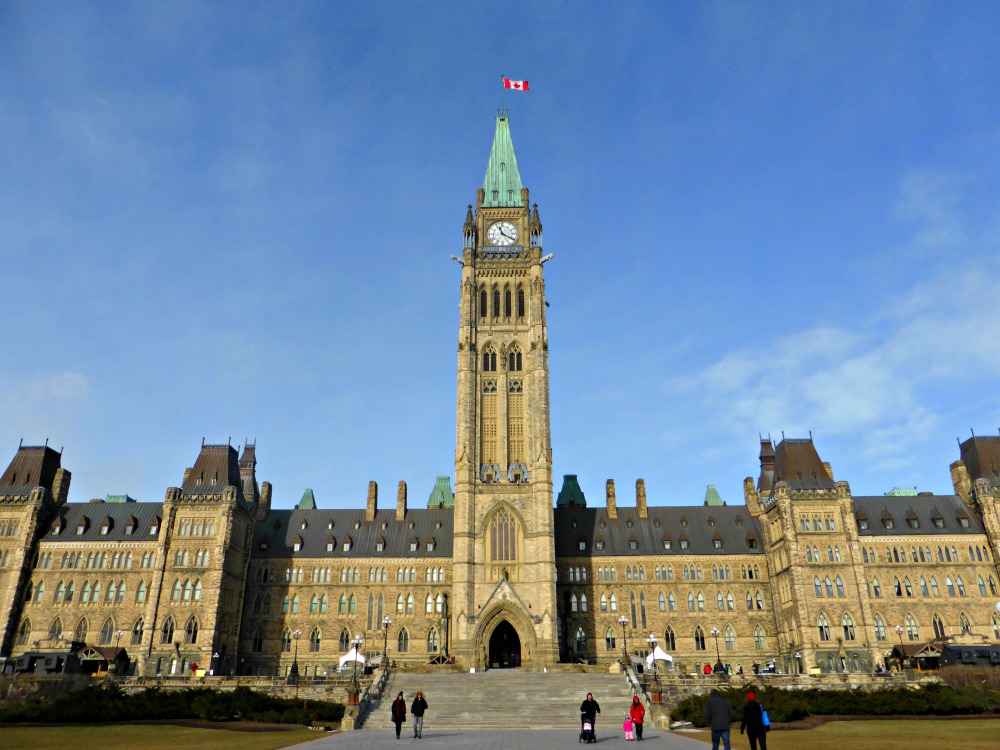
Built in a Gothic Revival style, the present Centre Block is the second version of this building due to a fire that destroyed the first in 1916. All that remains of the original structure is the Library of Parliament that is behind it. The Centre Block is the main building on Parliament Hill and is a very recognizable building to all Canadians- it’s even on our money!
Besides the Peace Tower that rises high in the centre, the Centre Block contains the House of Commons, Senate chambers, offices for a number of members of parliament, the Hall of Honour, Memorial Chamber, and Confederation Hall.
READ MORE: Touring Parliament Hill: The Peace Tower and Memorial Chamber and The Senate and House of Commons
CENTENNIAL FLAME
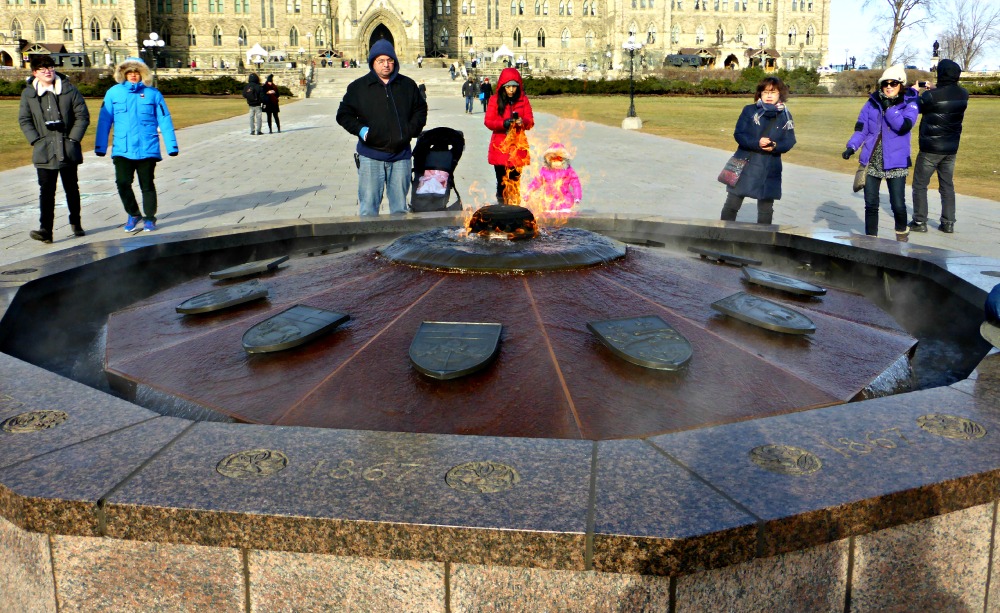
Walking up to the front of the Centre Block of Parliament Hill you’ll find a warm and welcome sight, especially on days as chilly as the ones when we visited Ottawa- the Centennial Flame. It was ignited on New Year’s Day 1967 by Prime Minister Lester B. Pearson to mark the first 100 years of Confederation.
The coats-of-arms of provinces and territories encircle the flame and the flowers of the provinces, and dates they joined Confederation are carved in the stones surrounding the water.
EAST BLOCK AND THE LIBRARY OF PARLIAMENT
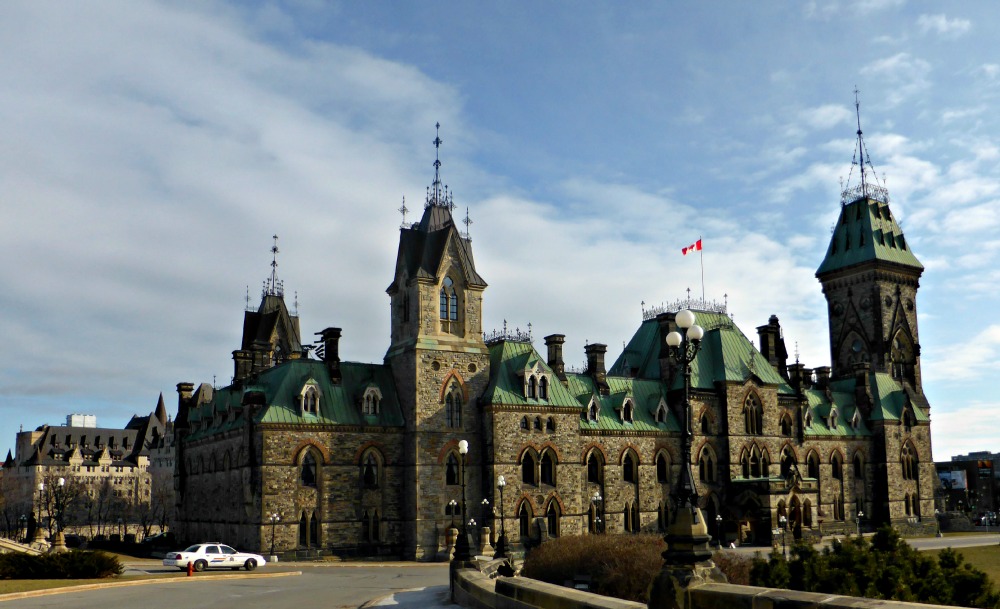
The East Block is one of the three buildings on Parliament Hill. It was completed in 1865 and was the centre of Canada’s government for 110 years. It housed the offices of the privy council, the Prime Minister, and until 1942, the Governor-General.
Today it contains offices for parliamentarians. It was built in the Victorian High Gothic style and along with the Library of Parliament is one of only two buildings to have survived mostly intact since original construction.
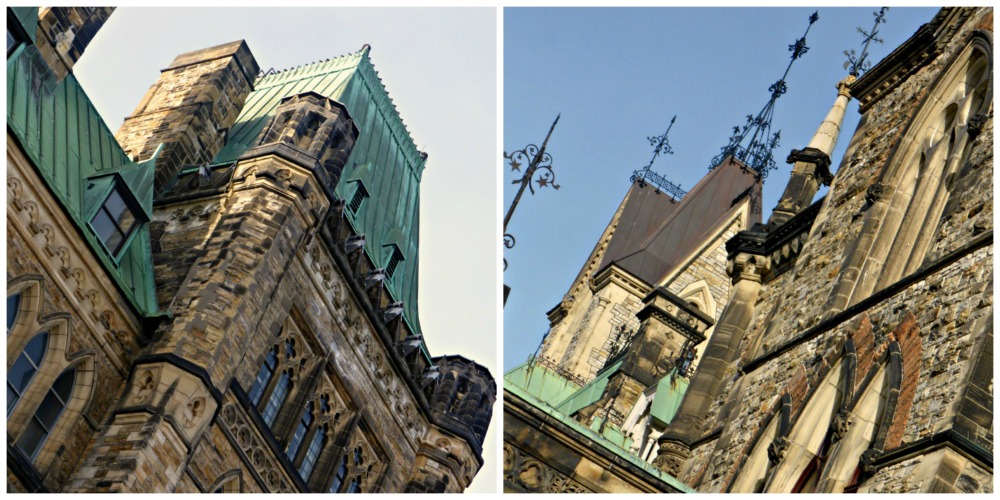
The Library of Parliament is the main information centre and research resource for the Parliament of Canada with the main branch in the rear of the Centre Block. Thankfully the great metal doors between it and the Centre Block were closed in the fire of 1916 so it was spared and it is absolutely beautiful inside. I’m a fan of great libraries in general but this one really left me in awe.
I recently read that the library was inspired by the Reading Room in the British Museum which is one part of that museum I haven’t seen yet. Looks like I know where I’ll be headed on one of my future trips back to London!
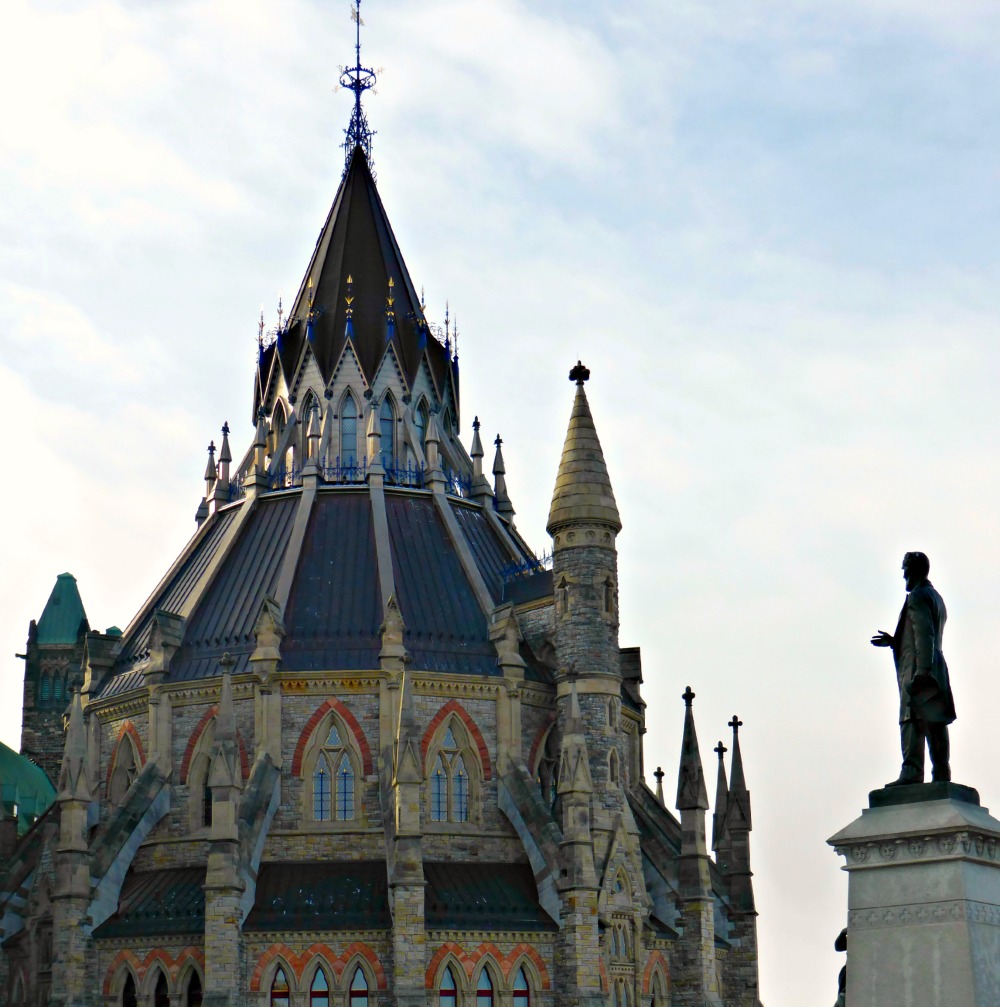
STATUES TO VISIT
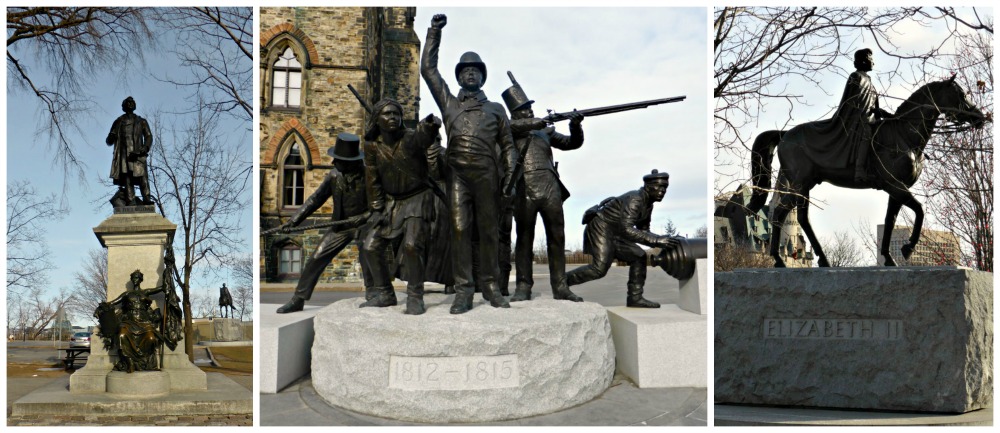
There are many statues on the grounds surrounding the buildings on Parliament Hill.
The statue on the left in this photo is of the first Prime Minister of Canada, Sir John A. Macdonald. He led Canada’s first government and guided the country’s growth from a small group of only four provinces to a nation that stretches from the Atlantic to the Pacific. His greatest achievement was Confederation (in 1867) and that is represented by the figure sitting at the base.
The monument in the centre is called “The Fight for Canada 1812-1815” with the figures reflecting the diversity of those who joined forces to defend the land and ensure Canada’s existence during the invasion from America during the War of 1812.
The statue on the right is of Queen Elizabeth II on her horse which was a former RCMP horse that was given to Her Majesty in 1977. Queen Elizabeth II has reigned as Canada’s monarch since 1952 and this monument of her was unveiled as part of Canada’s 125th-anniversary celebrations, after taking a team of ten people two years to create it.
There are also about 15 other statues and monuments surrounding Parliament Hill which will be on my list to see for sure the next time I’m in Ottawa.
RIDEAU CANAL
The Rideau Canal was opened in 1832 as a precaution in case of a war with the United States and connects the city of Ottawa to Kingston. It is 202 km in length and today is used primarily for pleasure boating in the summer and ice skating in the winter. It contains a series of locks that operate from mid-May to mid-October and is the oldest continuously operated canal system in North America and in 2007 it was registered as a UNESCO World Heritage Site.
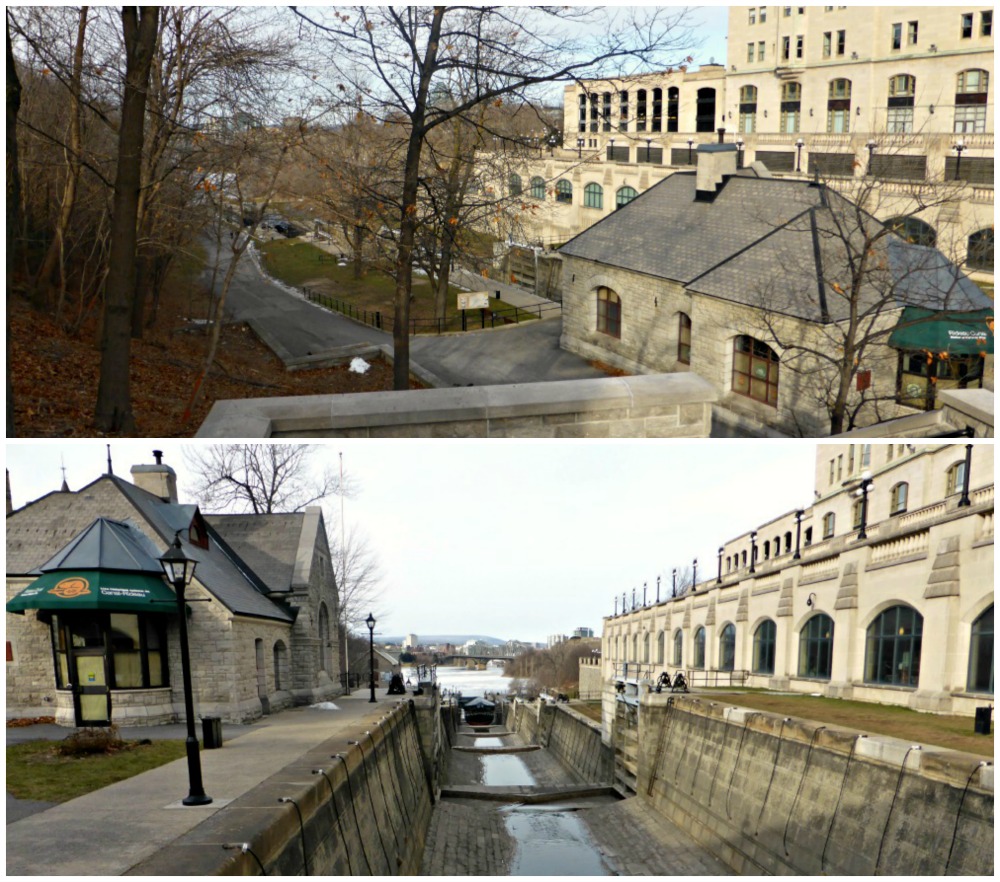
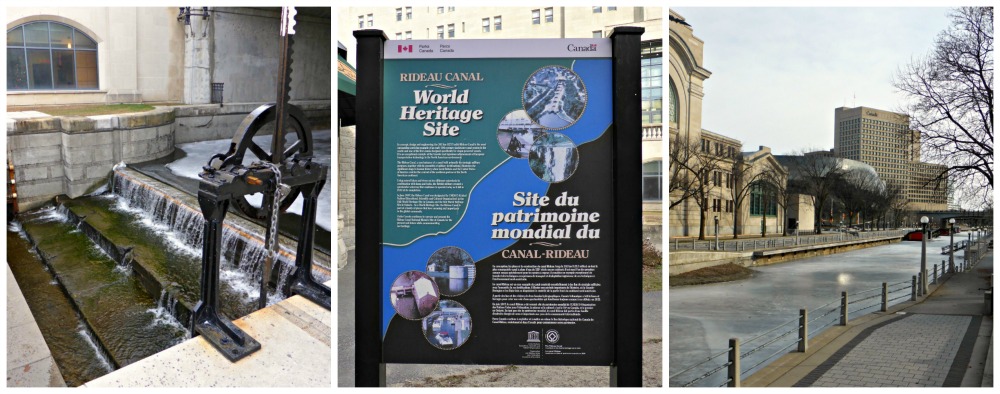
CONFEDERATION SQUARE AND THE NATIONAL WAR MEMORIAL
Confederation Square is considered to be the second most important ceremonial centre in Ottawa after Parliament Hill. It is just a short walk from Parliament Hill and is surrounded by Wellington Street and Elgin Street and all their grand buildings. Many of those buildings are considered landmarks which helped earn the square the designation as a National Historic Site of Canada in 1984.
Just across the street from the square are the flags of each of the provinces and territories of Canada in the order that they joined Confederation. My home province of New Brunswick was one of the four original provinces and its flag and coat of arms are shown below.
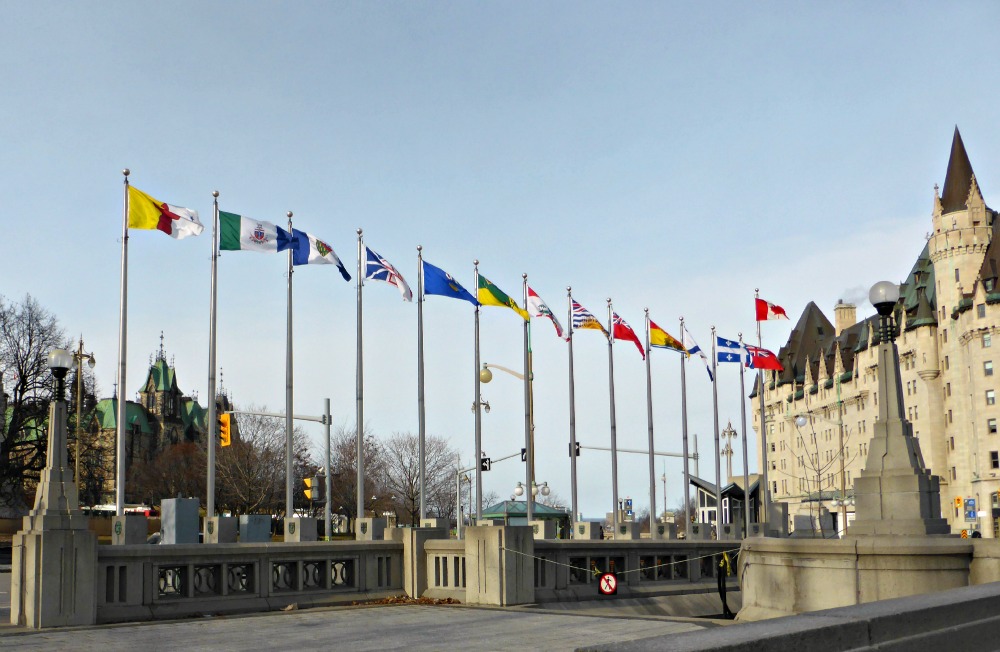

Although called a square, Confederations Square is actually more of a triangle and Canada’s National War Memorial stands at its centre. Unveiled in 1939 to commemorate the response of Canadians during WWI, it has, over the years, come to symbolize the sacrifice of all Canadians who have served Canada in time of war.
In 1925, a worldwide competition was held to choose a design for the memorial that would be erected in Canada’s capital. The vision of the government was to keep alive the “spirit of heroism, the spirit of self-sacrifice, the spirit of all that is noble and great that was exemplified in the lives of those sacrificed in the Great War, and the services rendered by the men and women who went overseas.” Of the 127 entries from several countries, the design submitted by Vernon March of England called “The Great Response of Canada” was chosen in 1926. He was assisted by his six brothers and his sister who completed his work after he died in 1930. The National War Memorial was officially unveiled by King George VI on May 21, 1939.
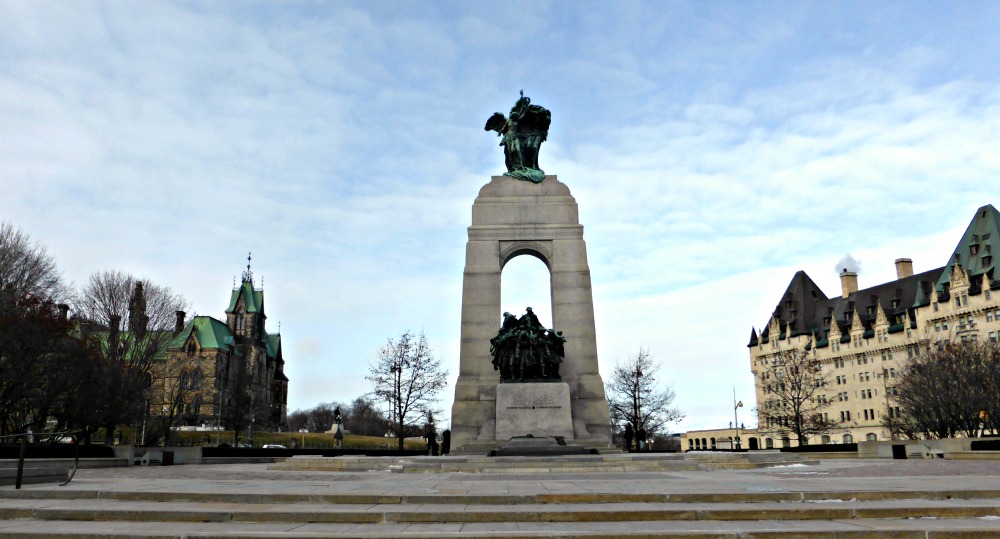
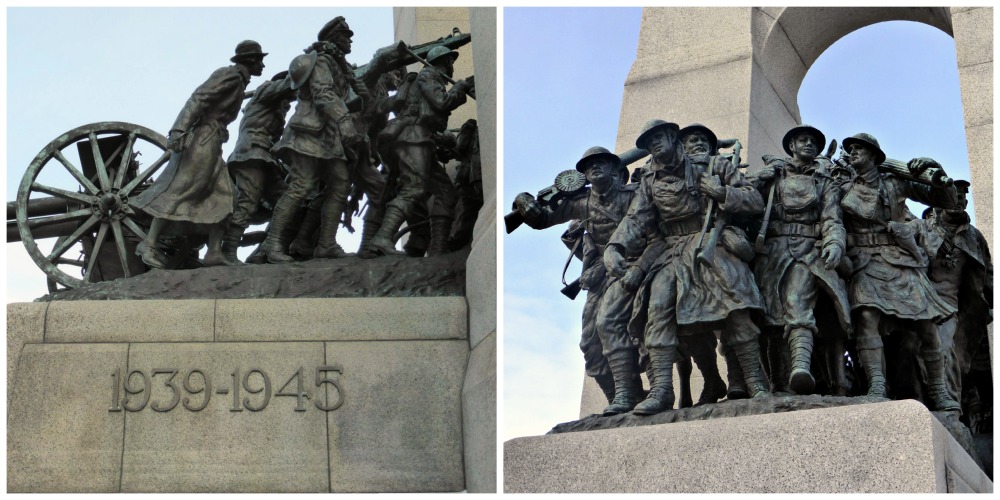
In May 2000, the remains of an unidentified Canadian soldier who died in WWI were repatriated from France and buried in the special tomb in front of the National War Memorial. The Tomb of the Unknown Soldier was created to honour the more than 116,000 Canadians who sacrificed their lives in the cause of peace and freedom.
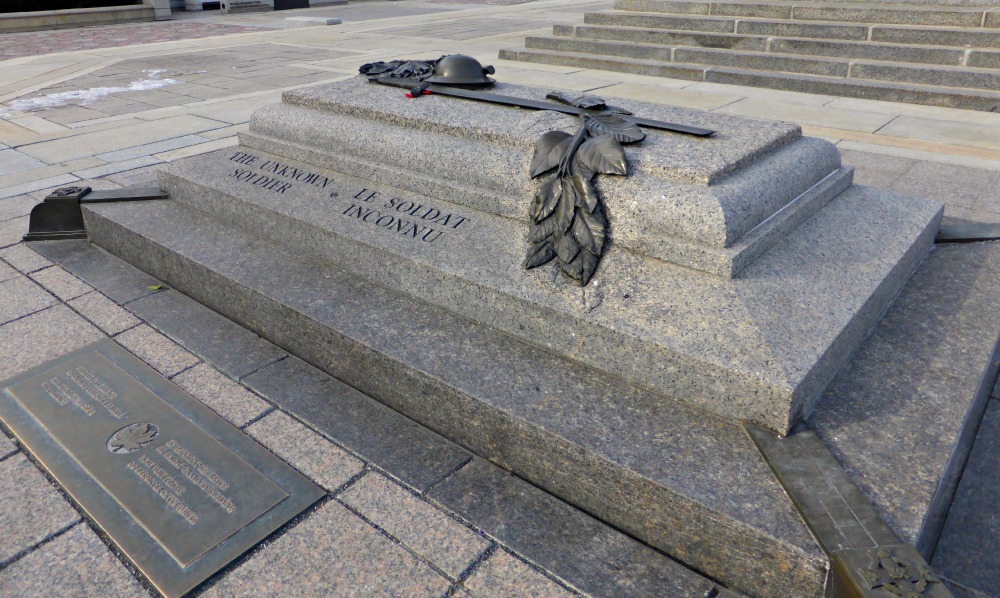
HAVE YOU EVER VISITED OTTAWA? OR, IF NOT CANADIAN, HAVE YOU VISITED YOUR OWN COUNTRY’S CAPITAL AND SPECIAL MEMORIALS AND MONUMENTS?
RESOURCES | PLAN YOUR TRIP TO CANADA
Some of the links in the post above are affiliate links. This means if you click on the link and purchase the item, we will receive an affiliate commission but this does not affect the price to you. Please read our full disclosure policy here.





